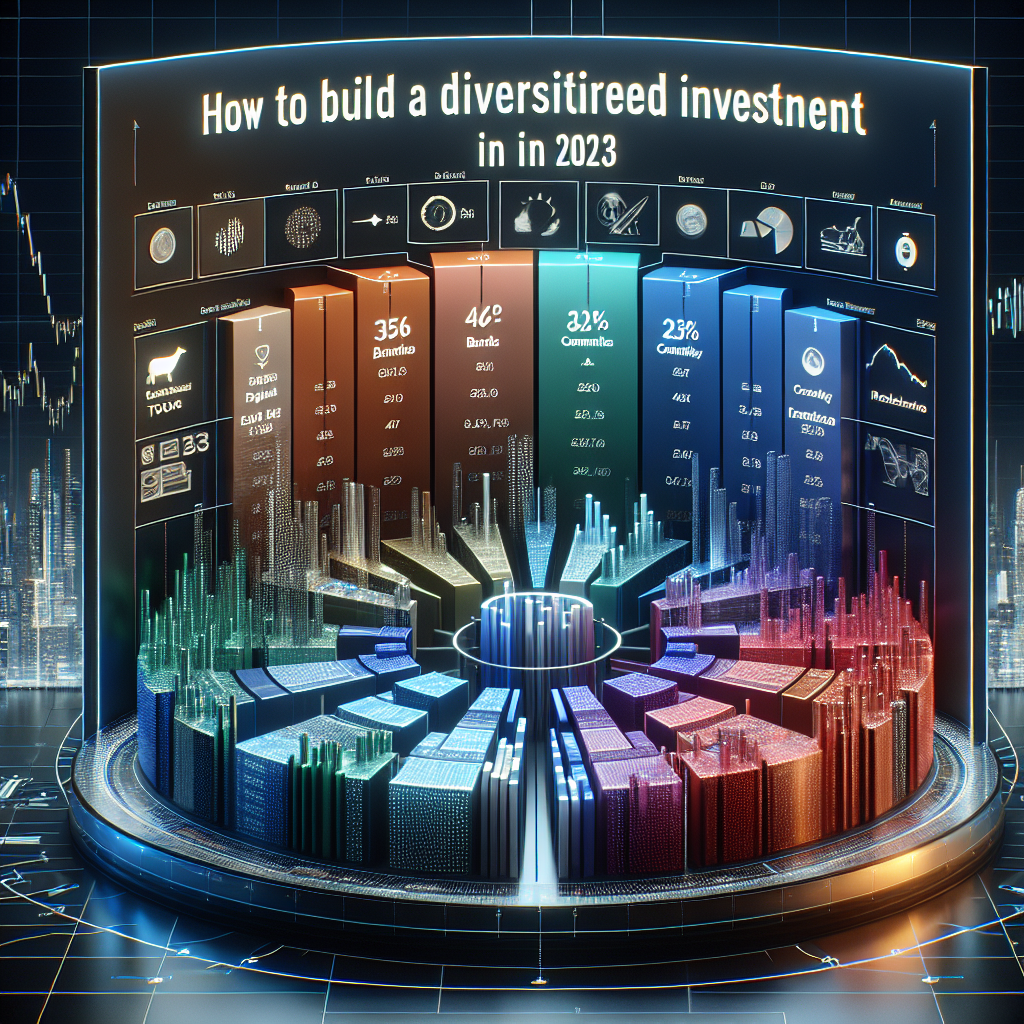The economic landscape of 2023 presents unique opportunities and challenges for investors. With geopolitical tensions, technological advancements, and evolving market dynamics, constructing a diversified investment portfolio is more critical than ever. A well-diversified portfolio cushions against market volatility, minimizes risks, and enhances potential returns. This guide provides step-by-step insights to help you build a diversified investment portfolio in 2023.
Understand Your Financial Goals and Risk Tolerance
Set Clear Financial Goals
Start by defining your investment objectives. Are you saving for retirement, buying a home, funding education, or building wealth? Clear goals will guide your investment choices.
Assess Your Risk Tolerance
Risk tolerance is your ability and willingness to lose some or all of your original investment in exchange for greater potential returns. Factors influencing risk tolerance include age, income, investment timeline, and financial responsibilities. Low risk tolerance might lead you to conservative investments, while high risk tolerance allows for more aggressive strategies.
Diversify Across Asset Classes
1. Stocks
Stocks or equities often form the core of an investment portfolio. They offer high growth potential but come with heightened volatility.
- Geographic Diversification: Invest in domestic and international markets to mitigate country-specific risks. Geography can play a crucial role in relative performance.
- Sector Diversification: Spread your investments across different sectors (e.g., technology, healthcare, finance) to avoid sector-specific downturns.
2. Bonds
Bonds provide stability and steady income. In 2023, with possible interest rate fluctuations, consider diversifying into:
- Government Bonds: Generally safe with lower returns.
- Corporate Bonds: Higher yields but with more risk.
- Municipal Bonds: Tax advantages for certain investors.
3. Real Estate
Real estate can act as a hedge against inflation and adds tangible assets to your portfolio. Consider:
- Direct Investment: Purchasing property.
- Real Estate Investment Trusts (REITs): Investments in commercial properties without the need to manage physical real estate.
4. Commodities
Commodities like gold, silver, and oil can protect against inflation and market uncertainty.
5. Alternative Investments
Include assets like private equity, hedge funds, and cryptocurrencies to further diversify and potentially increase returns. However, these come with higher risk and less liquidity.
Utilize Diversified Investment Vehicles
Exchange-Traded Funds (ETFs) and Mutual Funds
ETFs and mutual funds automatically provide diversification by pooling funds from many investors to buy a wide range of securities. They can focus on specific sectors, regions, or asset classes.
Index Funds
Index funds aim to replicate the performance of a specific index (e.g., S&P 500). They offer broad market exposure and are cost-effective.
Robo-Advisors
Robo-advisors use algorithms to build and manage a diversified portfolio based on your risk profile and goals. They are a low-cost option for investors seeking automated portfolio management.
Monitor and Rebalance Your Portfolio
Regular Monitoring
Regularly assess the performance of your investments to ensure they align with your financial goals. The economic conditions in 2023 may require more frequent evaluations.
Rebalancing
Rebalancing involves adjusting your portfolio to maintain your desired asset allocation. It ensures that no single investment disproportionally affects your portfolio’s risk and return profile. Consider reallocating investments quarterly or annually.
Stay Informed and Adapt
Continuous Learning
Keep abreast of market trends, economic news, and global events that can impact your investments. Knowledge empowers you to make informed decisions.
Adaptation and Flexibility
The investment landscape is constantly evolving. Stay flexible and be willing to adapt your strategy in response to new data or changing circumstances.
Conclusion
Building a diversified investment portfolio in 2023 requires a clear understanding of your financial goals, risk tolerance, and the broader economic environment. By spreading investments across various asset classes, leveraging diversified vehicles, and regularly monitoring your portfolio, you can manage risk and position yourself for solid returns. Stay informed, adaptable, and proactive to navigate this year’s unique challenges and opportunities. Happy investing!


